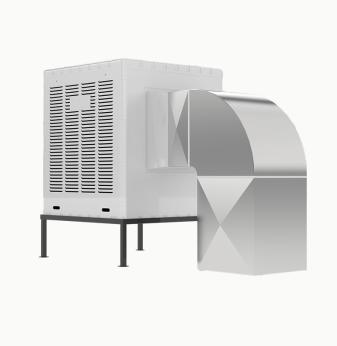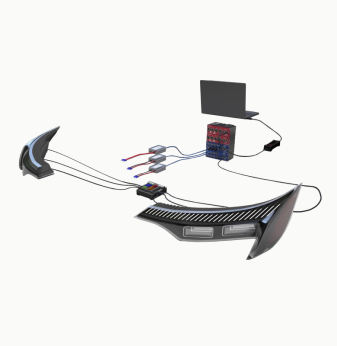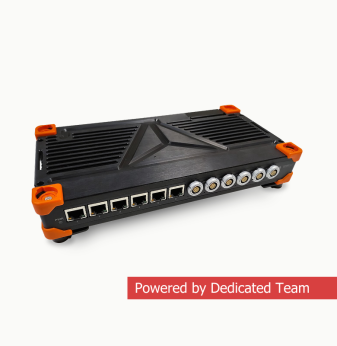Autonomous Self-Repair in Printed Circuit Boards for High-Reliability Embedded Applications
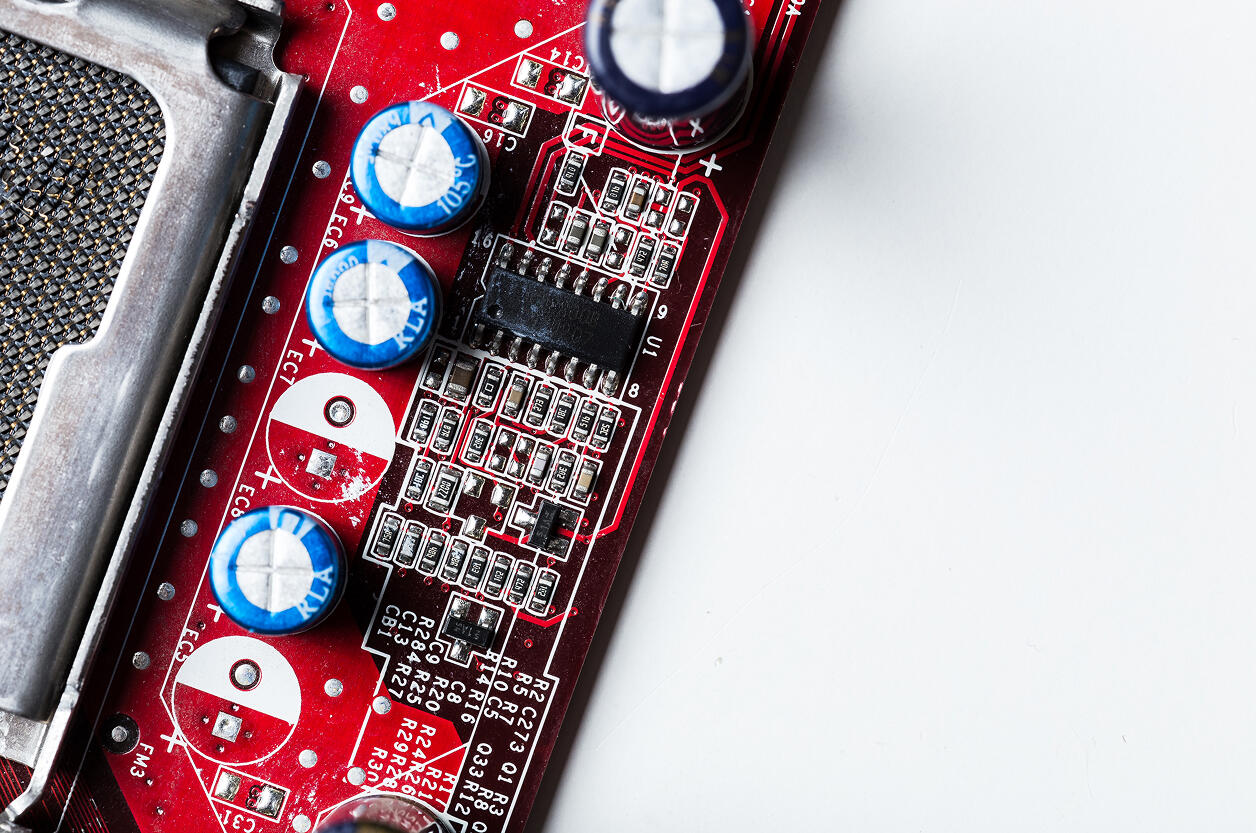
Self-repairing printed circuit boards (PCBs) represent a class of adaptive electronic structures capable of autonomous restoration of electrical and mechanical integrity after localized damage.
These systems combine embedded sensing, conductive restoration media, and intelligent routing control to sustain electrical continuity and functional stability under mechanical stress, vibration, or thermal cycling.
The approach extends the operational lifetime of mission-critical and industrial embedded devices beyond conventional maintenance limits.
The principle of autonomous electronic repair aligns with emerging engineering requirements in domains characterized by inaccessibility, long duty cycles, and non-tolerant downtime: aerospace, defense, energy, and high-density industrial automation.
The following text provides a systematic characterization of physical mechanisms, structural implementations, and design constraints associated with self-repairing PCB systems, focusing on their applicability to embedded and cyber-physical architectures.
1. Conceptual framework
A self-repairing PCB is defined as a multilayer electronic interconnect substrate embedding additional layers or microstructures that enable restoration of continuity when a defect or micro-fracture interrupts the conductive pathway.
Restoration is performed either through material-based mechanisms (conductive polymer flow, microencapsulated particle release, or thermally reversible bonding) or architecture-based mechanisms (reconfigurable routing matrices and redundancy control managed by embedded microcontrollers or FPGAs).
These systems perform three consecutive operations:
- Fault detection — continuous or periodic monitoring of impedance, potential difference, or temperature gradients.
- Localization and classification — identification of the disrupted trace, via, or plane segment.
- Restoration — activation of localized repair, involving physical healing material or logical rerouting.
Such architectures are considered a subset of autonomous maintenance electronics, where fault-tolerant behaviour is realized not at system redundancy level but at material and circuit topology level.
2. Material-based healing methodologies
2.1 Microencapsulated conductive agents
One of the primary implementations employs polymer matrices containing microcapsules filled with conductive inks or metallic nanoparticle suspensions.
When the substrate experiences mechanical deformation, capsule rupture releases the conductive fluid, which fills the discontinuity, polymerizes, and reconnects the circuit.
Common conductive agents include silver nanoparticle dispersions, eutectic gallium-indium alloys, and carbon nanotube composites.
The conductivity recovery factor typically reaches 80–95 % of nominal trace resistance after a single healing event, depending on trace geometry and encapsulant viscosity.
The mean capsule diameter (10–50 µm) and spatial distribution directly influence the healing probability per unit area.
Repeated healing is possible if multiple capsules are embedded within the crack propagation region; however, the probability of recurrent restoration decreases exponentially with prior activations.
2.2 Intrinsically conductive polymers and reversible bonding
Polymer matrices incorporating dynamic covalent bonds (Diels-Alder or disulfide exchange) exhibit thermally reversible cross-linking.
When cracks form under mechanical or thermal stress, local heating or current-induced Joule effect reactivates the polymerization, closing micro-gaps in both structural and conductive layers.
This mechanism ensures repeatable healing cycles without external intervention.
Integration of conductive fillers (graphene flakes, PEDOT:PSS, or silver nanowires) transforms such polymers into multifunctional conductive composites, suitable for flexible and stretchable circuits.
2.3 Sintering and re-flow mechanisms
An alternative method uses embedded micro- or nano-particles with low melting points (Sn-Bi, Ga-In) which sinter upon localized heating from current spikes or controlled laser pulses.
These systems are advantageous in high-power or high-frequency boards, where micro-cracks form under current stress rather than mechanical bending.
After re-flow, the restored joint maintains near-original conductivity with minor structural alteration.
2.4 Structural healing via capillary transport
Capillary networks integrated into the PCB substrate can distribute conductive fluids or adhesive polymers through microchannels activated by pressure differentials.
Such systems imitate vascular networks in biological organisms and allow multiple, spatially distributed repairs.
Although complex to manufacture, capillary-based self-healing provides scalability for large multilayer PCBs, typical in industrial and defense electronics.
3. Architecture-based restoration methodologies
3.1 Reconfigurable interconnect matrices
Circuit reconfiguration employs embedded programmable routing layers controlled by microcontrollers or FPGA logic.
When impedance deviation indicates an open circuit, the controller dynamically maps the signal path to an alternate route via redundant traces or switch matrices.
Routing time is typically below 10 ms, maintaining system continuity without power cycling.
3.2 Distributed diagnostic networks
Self-repair requires embedded diagnostic subsystems, including resistive grids, current sensors, or time-domain reflectometry modules.
These continuously sample circuit behaviour, detect anomalies, and trigger rerouting or healing activation commands.
Integration with industrial BIST (Built-In Self-Test) architectures allows remote telemetry and predictive fault analytics.
3.3 Hybrid approaches
Hybrid systems combine material healing and programmable reconfiguration.
For instance, a thermally triggered conductive polymer performs primary physical repair, while an embedded FPGA ensures redundancy management if full conductivity is not restored.
This combination enhances reliability metrics, measured as mean time between failure (MTBF), by up to one order of magnitude compared to static redundancy.
4. Embedded sensing and control infrastructure
Effective self-healing requires continuous environmental and electrical feedback.
Typical sensing elements include:
- Thermal sensors detecting hot spots from resistive discontinuities.
- Impedance probes monitoring deviation from nominal trace resistance.
- Piezoelectric strain gauges observing substrate deformation.
- Optical fibers embedded in dielectric layers for precise crack detection through scattering variation.
Data from these sensors feed into microcontrollers executing fault-classification algorithms based on threshold detection or, in advanced prototypes, machine-learning inference models.
Fault maps are updated dynamically and stored in non-volatile memory for trend analysis, supporting predictive maintenance.
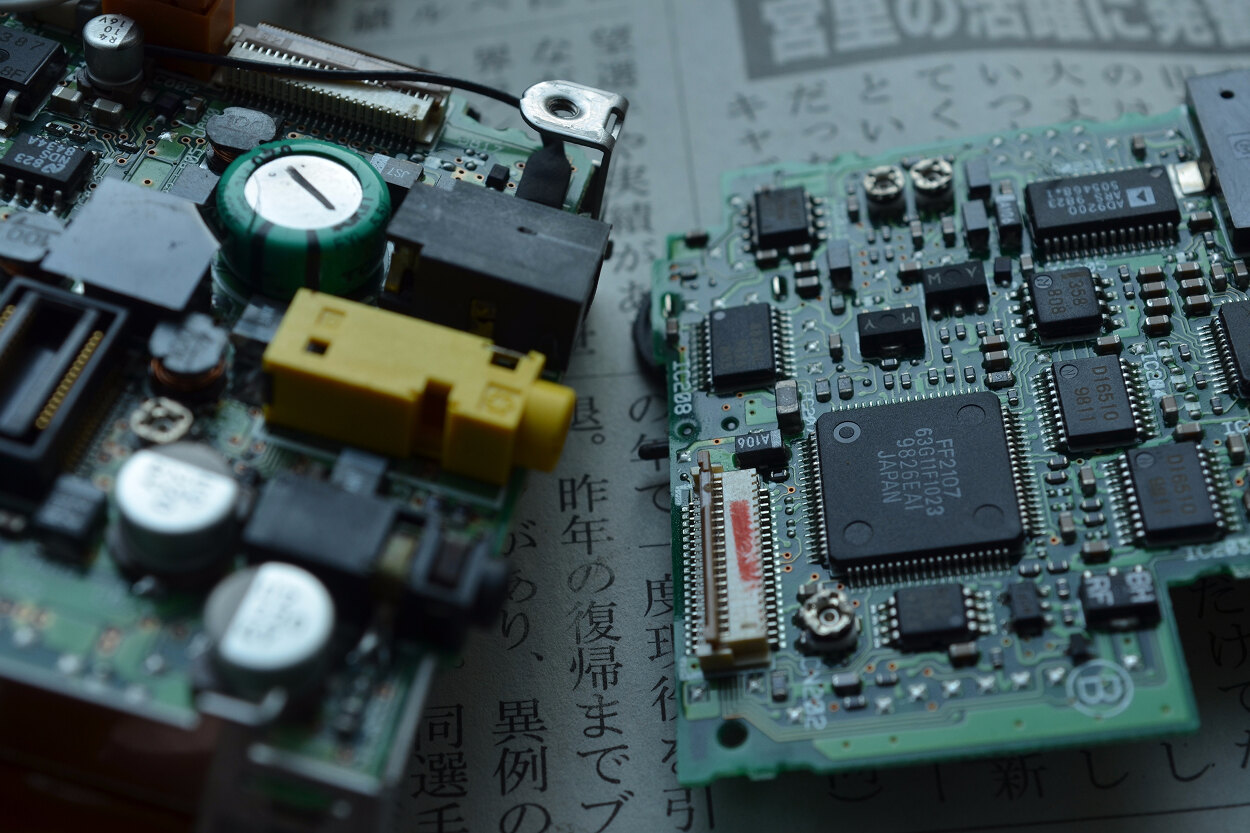
5. Integration with embedded intelligence
In high-reliability systems, fault management can be delegated to lightweight neural inference engines operating on embedded microcontrollers.
These systems analyze multi-sensor data to predict degradation trajectories before failure occurs.
Upon reaching a predefined probability threshold, the controller triggers proactive reconfiguration, reduces current flow in high-stress regions, or initiates localized heating for polymer reflow.
This architecture forms a closed feedback loop: sensing → prediction → repair → verification.
After each cycle, performance parameters are recalibrated, allowing adaptive control of healing energy, timing, and material consumption.
6. Application domains
6.1 Aerospace and defense
Boards exposed to vibration, radiation, or temperature gradients exhibit fatigue-induced micro-fractures.
Self-repairing PCBs maintain continuous operation of avionics, guidance units, or payload control modules without manual maintenance.
In satellite applications, autonomous restoration compensates for the impossibility of physical access and extends mission duration.
6.2 Automotive and electric mobility
Automotive power electronics experience repetitive thermal cycling and mechanical stress.
Integration of self-healing substrates in motor inverters, ADAS controllers, or battery-management circuits mitigates solder joint degradation and copper-trace fatigue, reducing field failures in long-life vehicles.
6.3 Industrial automation and robotics
In robotic and PLC environments, vibration and mechanical shock often produce intermittent open circuits.
Embedding healing polymers and distributed diagnostic networks ensures uninterrupted control-loop execution, essential for just-in-time manufacturing systems with near-zero tolerance for downtime.
6.4 Energy and critical infrastructure
Renewable energy converters, grid monitoring nodes, and offshore controllers function in corrosive or thermally unstable environments.
Self-healing PCBs reduce maintenance frequency and stabilize electrical parameters in remote installations where service intervention is logistically costly.
7. Engineering constraints and verification challenges
7.1 Manufacturing complexity
Embedding microcapsules, capillary structures, or conductive polymers modifies standard PCB fabrication workflows.
Lamination temperature, resin flow, and drilling processes must be recalibrated to avoid damaging the encapsulated materials.
7.2 Repeatability and performance degradation
Each healing cycle slightly alters trace geometry and local dielectric constants, potentially impacting impedance control in high-frequency circuits.
Empirical models indicate cumulative resistance increase of 3–7 % per repair event.
7.3 Environmental tolerance
Healing agents exhibit viscosity and reactivity dependencies on temperature and humidity.
Long-term stability under radiation or corrosive atmosphere remains an unresolved issue for space and offshore use.
7.4 Testing and certification
Traditional test standards (IPC-6012, MIL-PRF-31032) do not define metrics for dynamic repair behaviour.
New validation methodologies — accelerated fatigue combined with real-time electrical monitoring — are required to quantify healing reliability.
7.5 Thermal and power interaction
In circuits carrying high current densities, local heating intended for repair must not exceed safe limits for adjacent components.
Thermal simulation integrated into electronic design automation (EDA) tools is necessary to constrain repair activation zones.
8. Future development trajectory
Between 2026 and 2032, the progression of self-healing PCB technology will follow three parallel vectors:
- Material maturation: transition from laboratory composites to industrial-grade thermoset polymers with predictable conductivity recovery and process compatibility.
- Integration with embedded AI: migration from deterministic threshold repair logic to probabilistic fault prediction models based on embedded machine learning.
- Standardization and qualification: introduction of IEC/ISO guidelines defining healing efficiency, mean restoration cycles, and safety factors for autonomous maintenance electronics.
In industrial practice, self-repairing substrates will merge with condition-monitoring systems into unified reliability frameworks.
Manufacturers of mission-critical hardware will incorporate health telemetry channels reporting healing events to cloud-based maintenance dashboards.
Such telemetry will enable lifetime modelling and warranty validation based on actual repair statistics rather than fixed service intervals.
9. Economic and ecological implications
The deployment of self-healing PCBs is expected to reduce maintenance expenditures and electronic waste generation.
Each successful in-situ repair eliminates board replacement, decreasing logistics overhead and environmental impact.
In high-reliability industries, cost models indicate potential lifetime cost reduction of 15–30 % due to extended operational availability and fewer spare units.
Sustainability metrics will thus become an additional driver: autonomous repair aligns with global directives on circular electronics and life-cycle resource efficiency.
10. Conclusion
Self-repairing printed circuit boards represent a functional convergence between material science, embedded sensing, and intelligent control.
They introduce autonomous fault detection, localized restoration, and continuous health assessment directly into the hardware layer of electronic systems.
For embedded and industrial design engineers, this paradigm shifts reliability engineering from redundancy toward self-maintenance.
Integration of such architectures will enable embedded systems to achieve unprecedented uptime, minimize manual servicing, and extend lifecycle operation in domains where failure is not permissible.
AI Overview: Self-Repairing Printed Circuit Boards
Self-repairing PCBs implement embedded sensing, smart materials, and reconfigurable routing to autonomously restore functionality after damage.
Key Applications: aerospace avionics, EV power modules, industrial robotics, energy converters, defense-grade embedded systems.
Benefits: extended service lifetime, reduced maintenance, autonomous recovery, continuous self-diagnostics, sustainability improvement.
Challenges: manufacturing integration, repeatability, verification methodology, environmental limitations, power-thermal coupling.
Outlook: by 2032, self-healing PCB technologies will transition from research to qualified production, forming the reliability backbone of high-end embedded and industrial platforms.
Related Terms: self-healing polymer, conductive microcapsule, adaptive routing, embedded fault detection, autonomous maintenance electronics, resilient hardware design.
Our Case Studies


